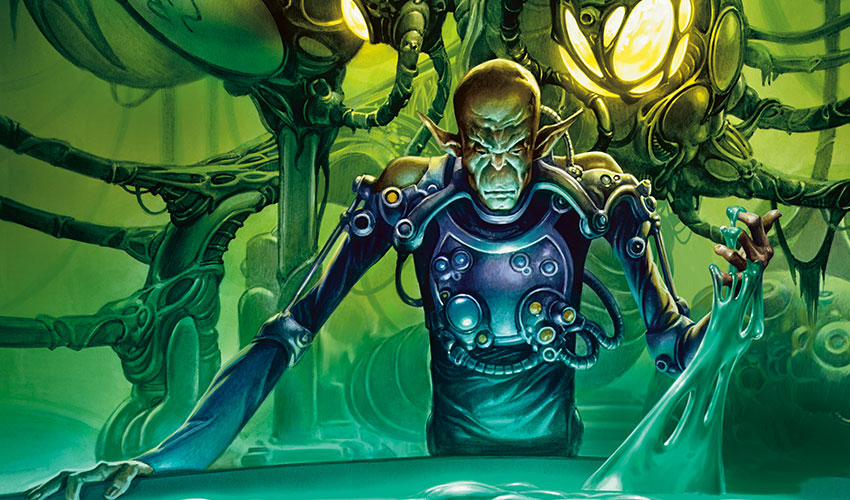Faction Packed
Looking back at original Ravnica, the biggest innovation of the set was a reworking of the concept of factions. Today, I thought I'd look into what exactly it means to be a faction set and the requirements to successfully designing factions. I will then look back at every faction set/block we've done and talk about how well they executed on factions.
Spring into Faction
I guess I'll start by defining what factions are.
#1: The set has elements, mechanically and flavorfully, that represent various groups
There are numerous ways that the groups can be defined. Mechanically, they tend to be balanced in some way around the color pie, but there's a lot of flexibility in how that's done. Sometimes all the factions have the same number of colors (such as the clans on Tarkir), but other times they can be a collection of a different combination of colors (such as the civilizations on Ixalan), usually having every color showing up an equal amount of times, but not always. The mechanical identities play into the larger feel of the world. Most often because of the importance of the color pie, factions tend to show up as either five or ten, but there have been factions as small as two. You can't really have a faction of one—the contrast between factions is important, and I'll be talking about that later on.
Flavorfully, the factions can represent all sorts of things. They can be groups that each live in their own space (such as the shards on Alara—well, at least they started that way), or they can be groups that have to intermingle with one another (such as the monsters on Innistrad). They could have a political component (such as the Dragon clans of Tarkir), or they can merely be how this world divides itself (such as the tribes of Lorwyn). The factions can be fighting with one another (such as the two sides of the war on Mirrodin) or trying to live in peace with one another (such as the guilds on Ravnica). Who they are and how they identify themselves can vary greatly, but the key thing to factions is that they flavorfully coexist with one another and usually the world is shaped by those relationships.
#2: Each group has a mechanical identity
Most often factions are defined by keywords. The most popular method is to assign one or more keywords per faction (usually only one if there are four or more factions). That means those keywords only exist within that faction. If Selesnya has convoke, for example, then no other guild gets to have convoke. Each faction is also provided a style of play. If you draft that faction, for instance, there is a feel for how the game will play out, something that should reinforce what that faction is about. Sometimes the factions will have strong mechanical themes caring about a particular part of the game, often something that no one but them would care about. The Esper shard, for instance, cared about artifacts while none of the other shards did. The other popular game component to create factions around is creature types. Usually, when this is done, a significant portion of the faction, if not all of the faction, share the same creature type. When this is done, the faction tends to mechanically care about that creature type.
#3: Each group has a creative identity
Most often the factions will have names. Unless those names revolve around creature types, those names tend not to have mechanical relevance but show up often in card titles and flavor text. Each faction will have a distinctive look and feel. If they're humanoid, they will tend to have a distinctive wardrobe and usually use distinctive tools and weapons. Their community, how they live and interact with one another, will most often be clearly defined as well. Often, they will have a symbol representing their group. That symbol is sometimes used as a watermark on the cards. (Watermarks can't be mechanically relevant outside of silver-border Magic.)
#4: The relationship between the groups defines the set
The role of the factions and how they interact with one another is key to establishing what the world is about. Is there a war (Invasion)? Are the inhabitants of the world obsessed with a similar goal that drives what they do (Ixalan)? Do some groups live in fear of the other groups (Innistrad)? Are they trying to all get along (Ravnica)? Is the world structured around the groups (Amonkhet)? There's a lot of flexibility in what the factions mean to one another, but it's important for those relationships to be interwoven into the essence of what the world is about.
As you will see when I start talking about all the sets with factions, we haven't successfully done all of the above every time. Each time we left something out, the factions failed.
Piece of the Faction
Now that I've defined what factions are, let me talk a bit about what it takes to design a faction set.
You have to build your set around the factions
If your set has factions, you need to figure that out early in the process because it's going to be the thing you build your set around. Here are the things you have to figure out:
a) Colors: What color is each faction going to be? As I explained above, factions tend to be color-balanced (that means each color has roughly an equal number of cards when all the cards in the factions are added up). The one big exception to this is two-faction sets. Those tend to be flavored as one side against the other and usually, but not always, each side has access to all five colors, although not always equally.
b) Creature type: Creature types tend to work out in one of two ways with factions. If the factions are built around creature types or they play an important flavor role, each particular faction tends to have a dominant creature type. If the factions aren't built around creature types then they are usually used as a means to differentiate between the factions, which means that particular creature types only show up in certain factions. For example, not all the white guilds get Angels; they're saved for Boros and Orzhov.
c) Mechanics: As I stated above, the lowest hanging fruit for faction design is to assign one or more keyword per faction. If you do it this way, that keyword is unique to that faction. However, another way to do it is to let each faction have access to its own combination of keywords, one unique to them. A third way is to let each faction have access to all the keywords, but subdivide how each faction uses the keyword.
These things have to be figured out early on because it will be used as the foundation for how you construct the set and how the Creative team builds the world.
You have to figure out the feel of each faction
I believe one of the big keys to the success of factions is allowing the audience to self-select which faction or factions they want to identify with. To make this work though, you need to do two things. One, you have to give each faction a unique voice and outlook. What does it mean to be in this group or to play with it? It has to have a strong point of view. If asked, for example, players should be able to explain what the faction represents. Two, you have to make sure that the factions are distinct from one another. One of the things that makes choosing a faction so much fun is that you are provided with a flavorful mix of choices, each with its own philosophy and attitude. If those start to blur, it diminishes the feel of uniqueness.
From a design point, this feel is not restricted just to flavor but to actual gameplay. What mechanics does this faction have access to? What specific card abilities? What deck archetype is it? What speed of play does it entail? What is its curve like? What game components does it care about? What are its strengths? What are its weaknesses? How does it win? To create a successful faction, you have to imbue it with unique gameplay.
Not only do you have to do all the above, but you also have to work with the Creative team to make sure that the feel of playing the faction matches up with its flavor. Does playing this faction feel like you are in the faction? Remember, that gameplay is as responsible for capturing the faction's feel as names, art, and flavor text. And if the faction is based on anything the audience would already know coming to the set, you have to match the audience's expectations. For example, I knew the Zombie faction in Innistrad had to have a slower gameplay because Zombies are defined in pop culture (okay, most pop culture) as being slow. It had to win with a horde of Zombies overwhelming your opponent because in the movies and TV, that's how Zombies win.
One of the tricks I use is to ask what emotional response the faction is supposed to create. When someone thinks about the faction, how is supposed to make them feel? Now capture that emotional response in the gameplay so that playing the faction will generate that emotion.
You have to make the factions draftable/buildable
On the surface, I'm sure this seems obvious, but it has a lot of ramifications about how you build the set.
a) It dictates what color combinations are drafted: In short, if you have a faction of a certain color mix, it has to be possible to draft that color combination. If the faction has three or more colors, you usually want to make it possible to draft two of the three colors.
b) It dictates as-fan: In order to be draftable, the faction has to exist in enough volume. This usually means that factions have to be workable at common. In turn, this dictates that each faction has to be portrayable through the complexity at common. If your factions are multicolored, it also means you have to provide mana fixing and an appropriate level for drafting, which again points toward decisions made in what to include at common. Also, if your faction is multicolored, it often means you want to have multicolored cards at common.
c) It dictates synergies: When designing a set, you have to build in synergies between any factions that overlap in color. For example, in Guilds of Ravnica, Boros had to play nicely with Izzet and Dimir. If your factions are primarily monocolored, you have to make a decision about what two-color strategies you're going to push (usually this is done through allied colors or enemy colors) and then make sure the factions that overlap those color combinations are synergistic.
d) It dictates Draft/deck archetypes: Between them, the factions have to cover a wide variety of Draft/deck archetypes. For instance, some need to be faster, some slower. Some more threat-oriented, some more answer-oriented. Some relying mostly on creatures, some relying less on creatures. We want all of the new mechanics showing up somewhere. Factions aren't designed in a vacuum. You have to think about how, as a total package, all the factions come together to make your Limited and Constructed environments.
Factions are very helpful in that they give structure to your set, but with them comes a lot of responsibility to make sure your set is maximizing their usage.
Course of Faction
To finish, I thought I'd take a look at every set or block so far that has made use of factions. I'll talk about what those factions were, give each set a letter grade for how well I thought the factions played out, and then I'll talk specifics.
Fallen Empires
The Factions:
- The Order of Leitbur (white)
- The Vodalian Merfolk (blue)
- The Order of the Ebon Hand (black)
- The Dwarves (red)
- The Elves (green)
Fallen Empires takes place on Dominaria on the continent of Sarpadia. Each faction is a different monocolored group fighting the other factions while also struggling internally with something in their own ranks (white has the Farrelites, blue the Homarids, black the Thrulls, red the Goblins and Orcs, and green the Thallids).
Faction Letter Grade: B-
Fallen Empires gets a lot of props for being the first faction-based set. It did a very good job of giving each faction a clear mechanical and creative identity. Where it falls short, and note that this is with a modern eye, is that they were not designed to be particularly synergistic with one another. Fallen Empires existed before drafting was a thing, so the need for cross-faction synergy was not crucial at the time. We wouldn't be able to make a monocolored faction set today without there being connective tissue between the factions.
Mirage Block
The Factions:
- The militaristic Zhalfir
- The religious Femeref
- The trading Suq'Ata Empire
Mirage block took place on Dominaria on the continent of Jamuraa. The story revolved around three warring nations. You'll note that I didn't list colors for the three factions as there wasn't a strong tie between color and factions.
Faction Letter Grade: F
I wasn't sure whether to even list Mirage block as a faction block, but regarding story, it was clear that the three nations were supposed to be important (as were four wizards—Mangara, Teferi, Jolrael, and Kaervek). The factions had no mechanical tie, so I don't think many players even think of the set as having factions. In the end, I decided to list it to make the point about how factions without a strong mechanical identity aren't even thought of as factions.
Invasion Block
The Factions:
- The Coalition (all colors)
- The Phyrexians (black and artifacts)
Invasion block takes place on Dominaria, and the story spans many continents. It's the first two-faction set/block with each faction taking a different side in a war. It's also the first time each faction gets a symbol which is used in art but not as a watermark. The Phyrexians are invading Dominaria (the end of a four-year story arc), and all the inhabitants of the plane are joining together to stop them.
Faction Letter Grade: D+

Unlike Mirage, it was clear that there were two sides and they were fighting one another. Unfortunately, there wasn't a lot of mechanical connection (the "domain" mechanic was a Coalition thing), and the two sets weren't crafted to make an interesting matchup if played against one another, something two-faction sets want to do.
Onslaught block
The Factions:
- Beasts (primary red-green, secondary blue-black)
- Birds (primary white-blue, secondary black-red)
- Clerics (white-black)
- Dragons (primary red, secondary blue)
- Elves (green)
- Goblins (primary red, secondary black)
- Mistform Illusions (blue)
- Soldiers (primary white, secondary blue-green)
- Wizards (primary blue; secondary white, black, red, and green)
- Zombies (black)
Onslaught block takes place on Dominaria on the continent of Otaria. It was the first tribal block, and its factions were based on creature types. Color association was all over the map with some tribes, like Elves and Zombies, restricted to one color and others, like Wizards and Beasts, showing up in all or most of the colors.
Faction Letter Grade: C-
The Onslaught factions had a clear mechanical identity. They weren't as synergistic with one another as they could have been, and there wasn't a strong connection between the factions and the identity of the world (or continent in this case, as we were still in the "don't leave Dominaria" phase of Magic).
Champions of Kamigawa block
The Factions:
- The Mortals (all colors)
- The Kami (all colors)
Champions of Kamigawa block takes place on the world of Kamigawa, and it's another two-faction block based around a conflict (as most two-faction blocks are). This conflict is between the mortals of the physical world and the kami (creature type Spirit) of the spiritual realm.
Faction Letter Grade: C
Each faction has a mechanical identity, but the mechanics don't do a great job of giving each side a strong feel—especially the mortals, which are more mechanically identified by their creature type than all together as a faction.
Ravnica block (and the successive Return to Ravnica block and Guilds of Ravnica)
The Factions:
- Azorius (white-blue)
- Dimir (blue-black)
- Rakdos (black-red)
- Gruul (red-green)
- Selesnya (green-white)
- Orzhov (white-black)
- Izzet (blue-red)
- Golgari (black-green)
- Boros (red-white)
- Simic (green-blue)
All the Ravnica sets take place on the city world of Ravnica, and the factions are the ten guilds which make up many of the inhabitants of the plane (there are some guildless creatures). They represent the ten two-color pairs and embody the flavor of each combination. Ravnica was the first set to make use of faction symbols as watermarks on cards.
Faction Letter Grade: A
Ravnica and the guilds are the gold standard for faction sets. They're designed to have a unique identity and play well with one another. The guilds are, by far, the most successful faction grouping we've ever designed.
Lorwyn block
The Factions:
- Changelings (all colors)
- Elementals (primary red, secondary all other colors)
- Elves (green-black)
- Faeries (blue-black)
- Giants (red-white)
- Goblins (black-red)
- Kithkin (white-green)
- Merfolk (blue-white)
- Treefolk (white-black-green)
This block takes place on the plane of Lorwyn. It's another tribal-based faction set. Each tribe is in at least two colors. The Changelings are a weird new addition as it's a faction made to work with and tie together other factions.
Faction Letter Grade: B-
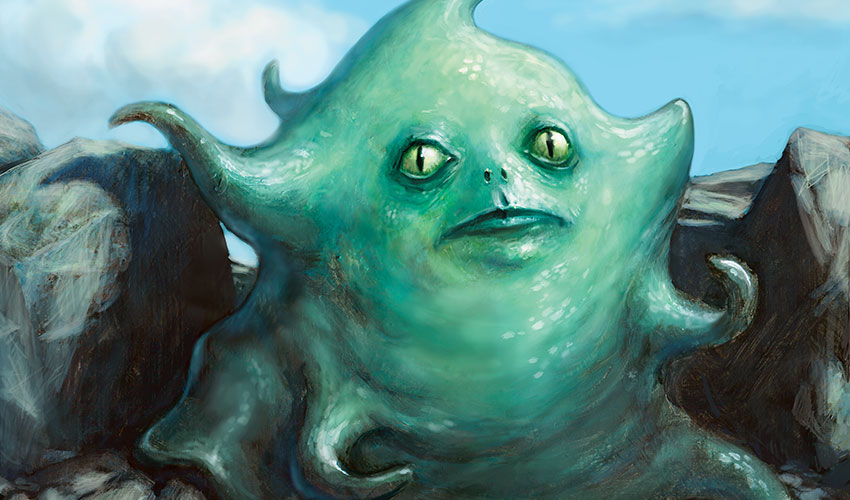
Each faction has a clear mechanical identity and the factions were built to synergize with one another. The biggest strike against this block is that the second set in the block, Morningtide, chose to focus on five different tribes, all classes. These classes do all intersect with the eight races, but the resulting web of connectivity creates a very unfocused message.
Shadowmoor block
The Factions:
In Shadowmoor:
- Kithkin (white-blue)
- Faeries and Merfolk (blue-black)
- Elementals (black-red)
- Goblins and Giants (red-green)
- Elves (green-white)
In Eventide:
- ??? (white-black)
- ??? (blue-red)
- ??? (black-green)
- ??? (red-white)
- ??? (green-blue)
This was another set I wasn't sure if I was supposed to include. It carried over all the race creature types from Lorwyn block (save Changelings), shifting the colors of everything but the Faeries. And it definitely had a mechanic identity with hybrid, but I'm not sure whether this actually counts as a faction block as, while there was a mechanical identity (and even that was restricted), there was very little creative identity.
Faction Letter Grade: D-

This is a good example of a set where factions have a complete departure between mechanical and creative execution to the point that I don't know how many players even perceive this block as having factions.
Shards of Alara block
The Factions:
- Bant (green-white-blue)
- Esper (white-blue-black)
- Grixis (blue-black-red)
- Jund (black-red-green)
- Naya (red-green-white)
This block takes place on the world of Alara, but it has been split into five unique miniature worlds, called shards, each with only three colors of mana. This is the first time we had factions where each was three colors.
Faction Letter Grade: B
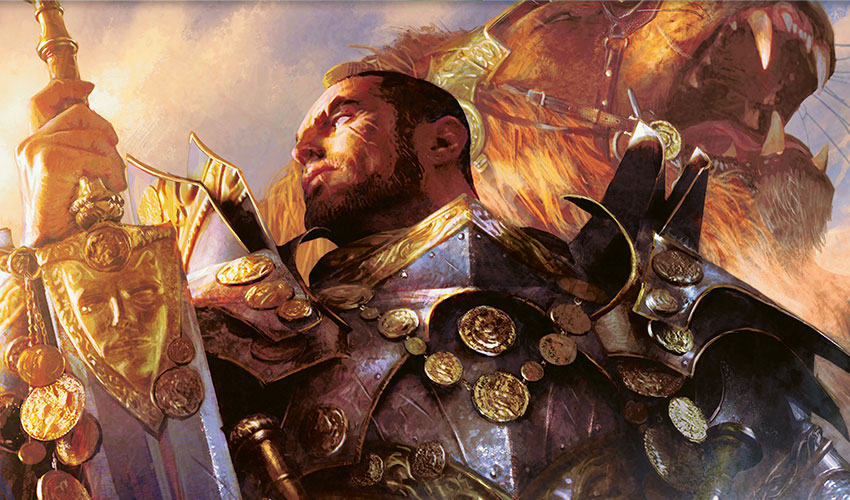
Alara is a great example of five interesting, well-fleshed out factions, each with its own distinctive outlook. The one big knock against the factions of Alara is that while each plays well by itself, not all the shards synergistically work with the sets that overlap with it.
Scars of Mirrodin block
The Factions:
- The Mirrans
- The Phyrexians
This block takes place on the world of Mirrodin as the Phyrexian's invade it and (spoilers) slowly turn it into New Phyrexia. This is another two-faction block based around a conflict. This is the second set to make use of watermarks for factions. This was especially important in Scars of Mirrodin block as it was illustrating the Phyrexians spreading their influence as the block progressed.
Faction Letter Grade: B+
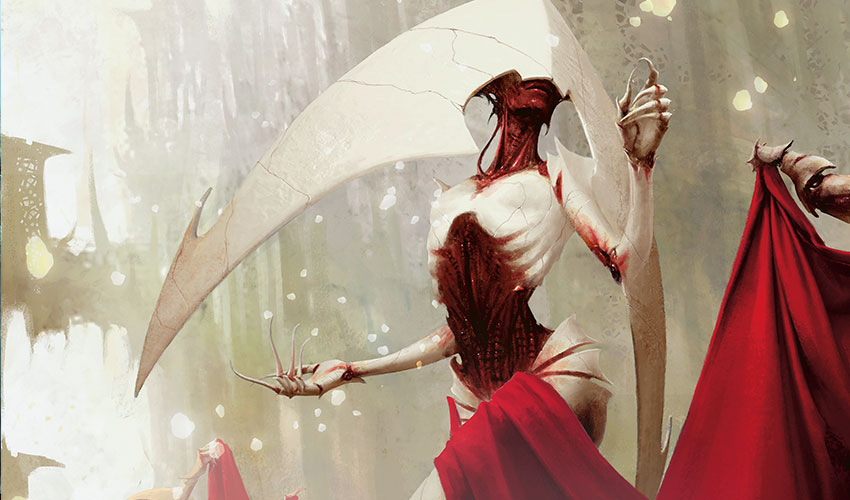
There's a lot to like here. Each side has a strong mechanical and flavorful feel, and they're designed to be played against one another. The biggest strike against this set is that the final as-fan of the components make it hard in Draft to mix the two sides together.
Innistrad block (and the successive Shadows over Innistrad block)
The Factions:
- Spirits (white-blue)
- Zombies (blue-black)
- Vampires (black-red)
- Werewolves and Wolves (red-green)
- Humans (primary green and white, secondary in the other colors)
This block took place on the Gothic horror plane of Innistrad, and its factions are the monsters of the world and their victims. While the factions are tribal based, the tribal component of the design was at a lower level than tribal blocks like Onslaught or Lorwyn.
Faction Letter Grade: A-
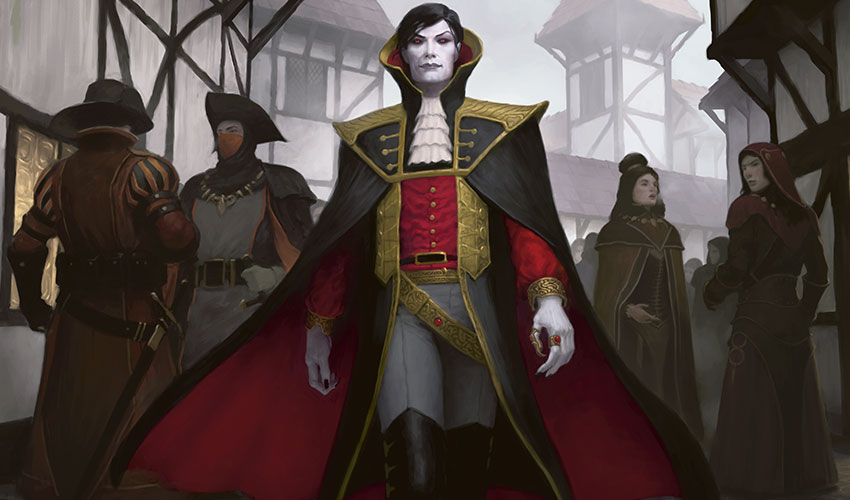
The Innistrad factions do a wonderful job capturing the top-down feel of all the monsters, complete with good cross-color synergies.
Khans of Tarkir and Fate Reforged
The Factions:
- Abzan (white-black-green)
- Jeskai (blue-red-white)
- Sultai (black-green-blue)
- Mardu (red-white-black)
- Temur (green-blue-red)
This block takes place on the warlord world of Tarkir. The five factions are all three-color wedge-based factions representing one of the clans of this world. This is another set to make use of watermarks for the factions. Unlike Ravnica, these factions each live in their own section of the world and thus have very different settings.
Faction Letter Grade: A-
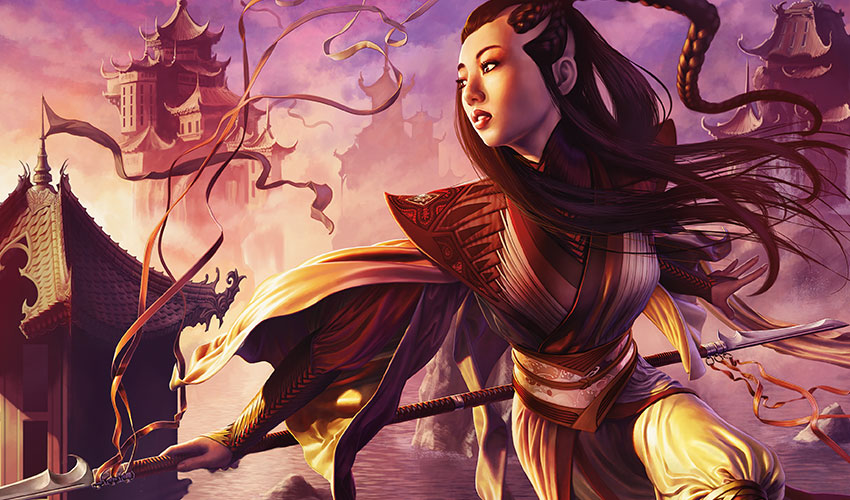
This is another good faction set. Each set has a distinctive feel yet they play well when drafted together.
Dragons of Tarkir
The Factions:
- Ojutai Brood (white-blue)
- Silumgar Brood (blue-black)
- Kolaghan Brood (black-red)
- Atarka Brood (red-green)
- Dromoka Brood (green-white)
This set takes place on Tarkir, but in a divergent timeline. The clans still exist but are now run by dragons and have collapsed to two-color. They used a modified version of the khan clan symbols as their watermarks.
Faction Letter Grade: B+

While the dragon clans have a cohesive feel, they ended up being less memorable than the khan versions. However, the clans are all synergistic with their connecting colors.
Battle for Zendikar block
The Factions:
- The Zendikari (all colors)
- The Eldrazi (all colors of mana, but colorless)
The original visit to Zendikar wasn't faction based, but the return was, as we had another war. The Zendikari were the rebels facing off against the Eldrazi, which had taken over their world since they had awoken after our last trip to Zendikar.
Faction Letter Grade: C+
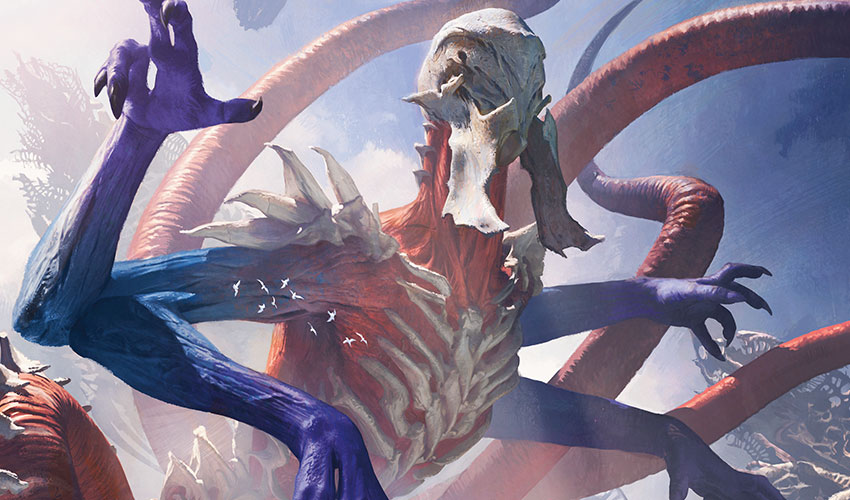
The Design team worked hard to give each side a cohesive feel, but the total package of the factions just didn't resonate all that well with the players.
Aether Revolt
The Factions:
- The Consulate
- The Rebels
The first set in the block, Kaladesh, wasn't about conflict, but the second set was. As with conflict-oriented sets, it was another two-faction set.
Faction Letter Grade: C
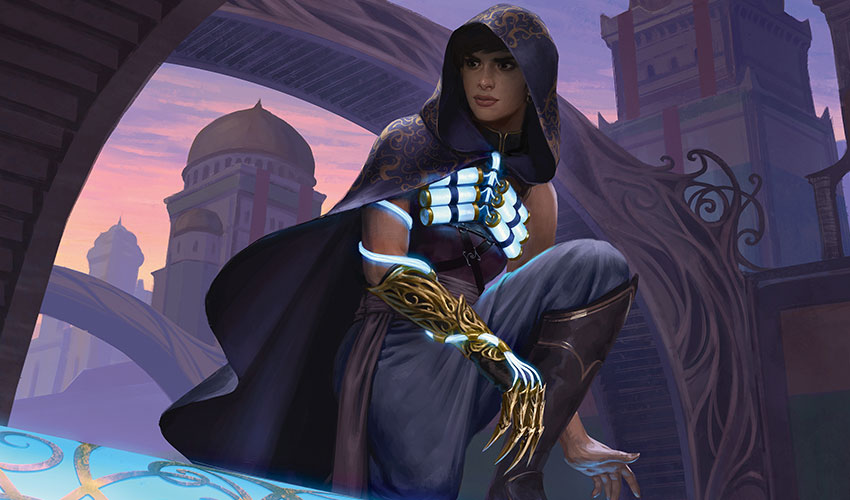
The story was about this conflict, and the design did give each side a mechanical identity, but the set never really felt like a faction set.
Amonkhet block
The Factions:
- The Followers of Oketra (white)
- The Followers of Kefnet (blue)
- The Followers of Bontu (black)
- The Followers of Hazoret (red)
- The Followers of Rhonas (green)
This block took place on the world of Amonkhet and revolved around the city of Naktamun. The city was defined by five gods which each came with their own trial, part of the journey every citizen was born to take. This is another set I wasn't sure whether to include because it's division is faction-y in some ways and not in others.
Faction Letter Grade: C-

The factions each have an identity and a feel but don't have the strongest mechanical connection. They are designed to play well together, though.
Ixalan block
The Factions:
- The Brazen Coalition – Pirates (blue-black-red)
- The Sun Empire – Dinosaurs (red-green-white)
- The Legion of Dusk – Vampires (white-black)
- River Heralds – Merfolk (green-blue)
This block takes place on the world of Ixalan, and it's another tribe-based faction block. This set plays around with having the factions be of different combinations of color with two three-color factions and two two-color factions.
Faction Letter Grade: B-
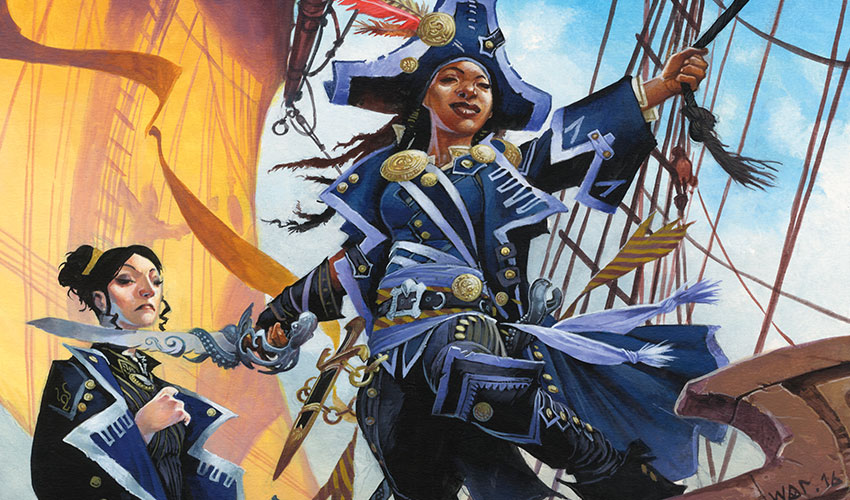
The factions were all distinctive, and the three-color factions were designed so each two-color subset played differently yet synergistically. The biggest problem was that they didn't interact with one another all that well, forcing players into the same play patterns.
Unstable
The Factions:
- Order of the Widget (white-blue)
- Agents of S.N.E.A.K. (blue-black)
- League of Dastardly Doom (black-red)
- Goblin Explosioneers (red-green)
- Crossbreed Labs (green-white)
Unstable takes place on the crazy inventor world of Bablovia. Its ally-colored factions represent the five groups in position of power in the world.
Faction Letter Grade: A-

The factions are all very flavorful. All five factions have access to all the mechanics in the set, with certain ones leaning toward certain mechanics. My one small complaint is that their mechanical themes could have been a little louder.
Where the Faction Is
That's all the time I have for today. I hope you enjoyed taking a peek at how we make factions. Hopefully, this is something you can think about as you play Guilds of Ravnica. As always, I'm eager to hear about your thoughts on today's column, as well as what you like and don't like about how we've done factions. If you have any ideas about how we could do them differently, I'd love to hear. You can email me or contact me through any of my social media accounts (Twitter, Tumblr, Google+, and Instagram).
Join me next week for trivia time.
Until then, may you have fun finding the faction that speaks to you.
#579: Designing Kaladesh
#579: Designing Kaladesh
On a rare "Drive from Work," I talk with carpooler Scott Van Essen about what it was like to design Kaladesh together.
#580: Busy R&D
#580: Busy R&D
This podcast tries to give a sense of scope about how many things we work on at once in R&D.
- Episode 578 Transformers TCG
- Episode 577 Squirrels
- Episode 576 History of Magic


